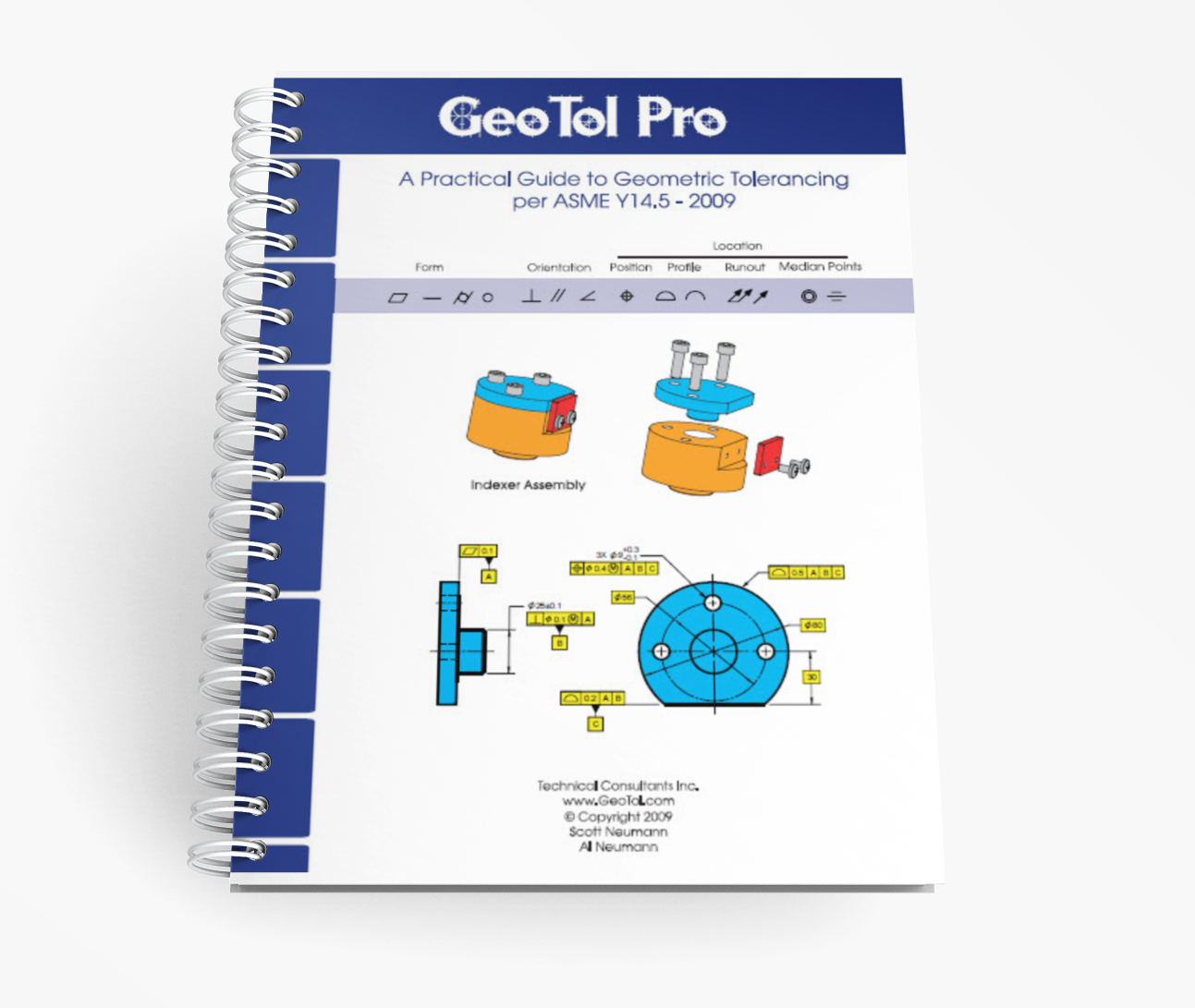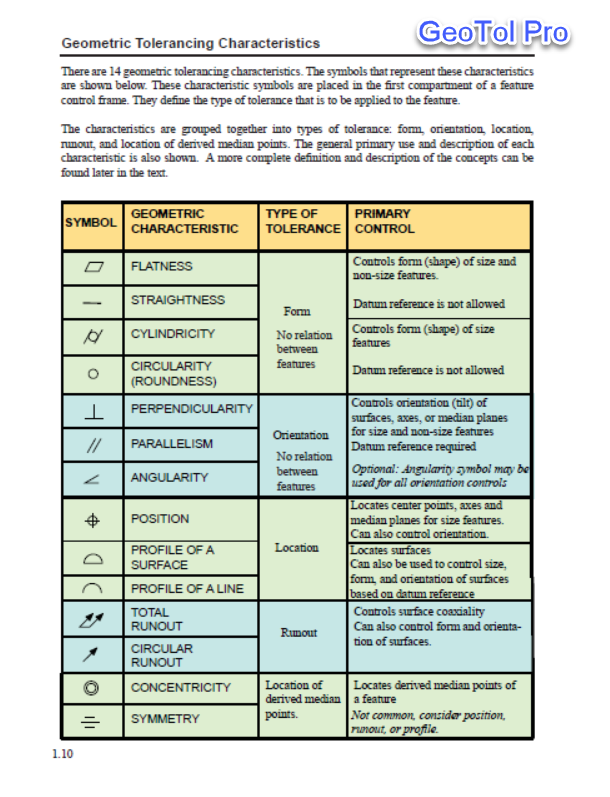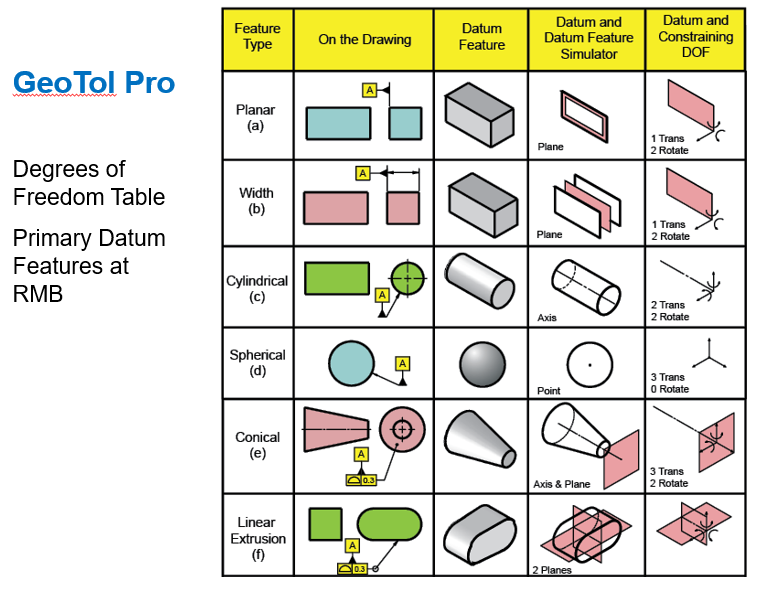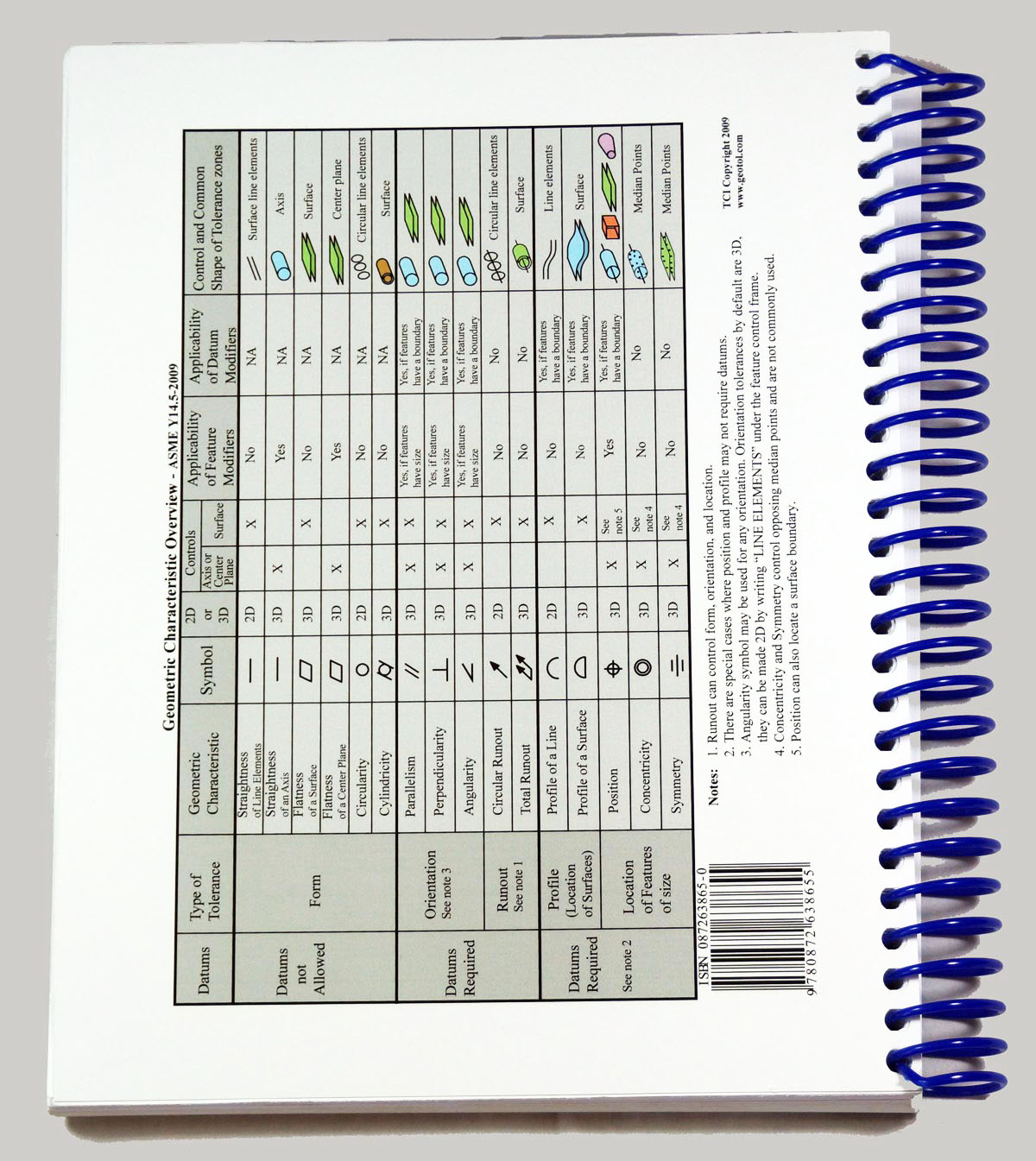Description
This geometric dimensioning and tolerancing book is a professional grade, must-have companion for all personnel using GD&T. Whether you are learning through our GeoTol Pro 2009 Online Program, presenting the GeoTol Pro 2009 Fundamentals PowerPoint to a classroom or watching our GeoTol Pro 2009 Fundamentals DVD series, this book follows along and allows you to work out the exercises presented in each of these programs. The book was released in mid-2009 and is recognized as the “Gold Standard” for interpreting geometric tolerancing.
It is written to the ASME Y14.5-2009 standard on dimensioning and tolerancing. It has tables of symbols and an appendix that lists all the improvements and changes from the earlier ASME Y14.5M-1994 standard so it can be used to interpret the 2009 or earlier standards on geometric tolerancing. The book is complete and also has excerpts listing the similarities and differences from the international, ISO standards on dimensioning and tolerancing. The book has 380 pages with hundreds of graphics in full color. The color graphics make the drawings and tolerance zones “pop” off the page. The color graphics also make the datum reference frame and tolerance zones stand out making the concepts clear and easy to understand.
This geometric dimensioning and tolerancing book is written in a simple and easy to understand language. It has 17 units that begin with the basic fundamentals of GD&T and gradually progresses through to the advanced concepts of tolerance boundaries and simple stack-up calculations. The book is designed for engineers, designers, manufacturing and quality personnel. It has hundreds of graphics that show parts in practical assemblies, the application on the drawing, graphical inspection techniques and data reporting procedures. The book comes loaded with exercises during and at the end of each chapter to allow students to periodically test their new found skills as they progress through the units. The book has a table of contents and index for an easy search for information.
Special feature for instructors/leaders: The book can be used alone as a reference or as part of a complete training system on geometric tolerancing. To aid an instructor/leader in the presentation of the geometric tolerancing training materials we have both a PowerPoint and a DVD video series. The GeoTol Pro 2009 Fundamentals PowerPoint has over 1700 full color animated computer graphics that can be used to present our GD&T course to a classroom of students. The page numbers on the bottom of the slides correspond to the pages found in the GeoTol Pro 2009 Workbook so students can follow along. We also have a GeoTol Pro 2009 Fundamentals DVD series which is a 17 unit series designed to present GD&T for personal/company learning or classroom use. Another helpful presentation tool is our GeoTol Pro Model set, consisting of 3D wood and plastic models that correspond to the graphics in the workbook. This allows the students to see and hold the 3D part that they are applying GD&T to. Also included in the model set is miscellaneous parts of inspection equipment such as height gage, angle plate, sine bar, vee blocks etc, which allows the instructor to show how quality would inspect the parts. The instructor/leader can use any or all of these materials to provide the students with an exciting/practical hands-on learning experience.
GeoTol Pro Fundamentals Workbook 2009 is co-authored by Scott Neumann and Al Neumann. Scott Neumann is a mechanical engineer who specializes in tolerance stack-ups and inspection techniques. Al Neumann has been a member of the ASME Y14.5 committee for the past 30 years and also serves on the ASME Y14.5.1 committee on mathematical principles of dimensioning and tolerancing. Both Al and Scott are active on the ISO standards committees and have authored best-selling books and video training programs on the subject of geometric tolerancing. They both travel presenting thousands of training programs to hundreds of thousands of people around the world. The book imparts Al and Scott’s knowledge working with thousands of people in hundreds of industries around the world.




